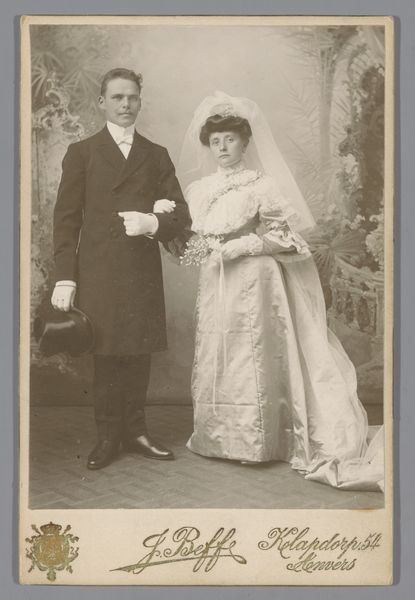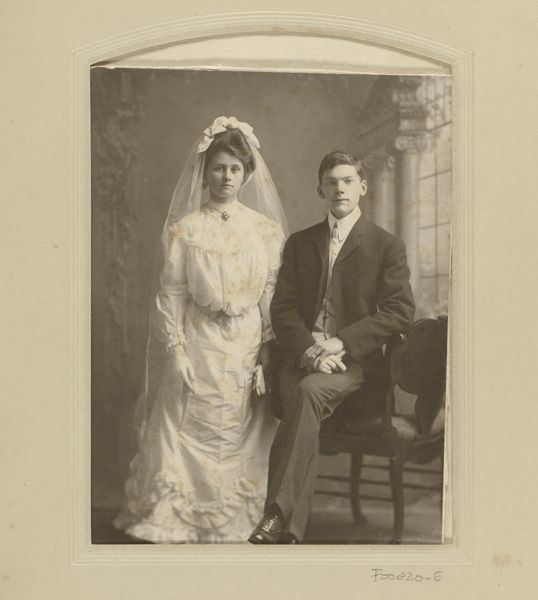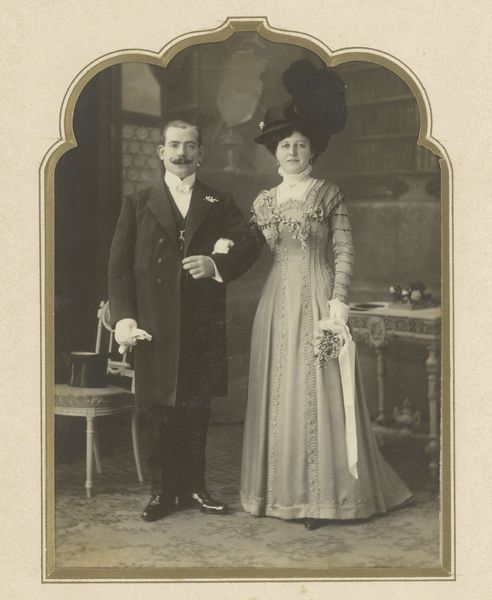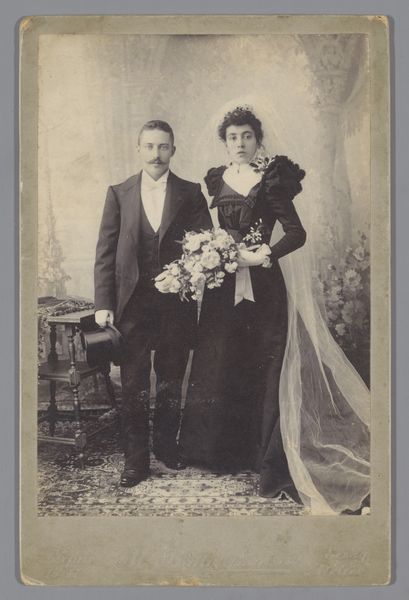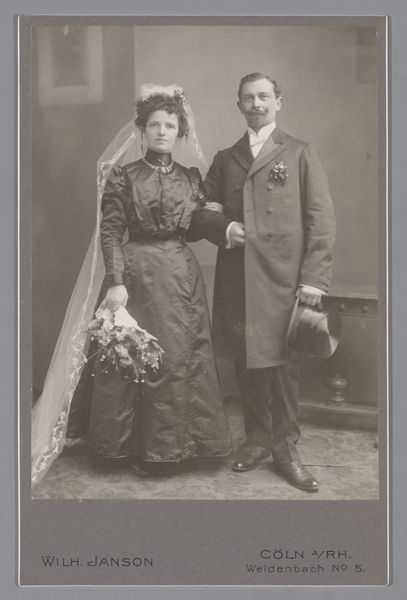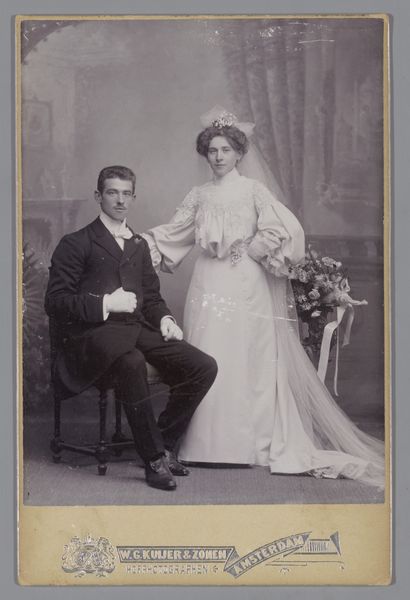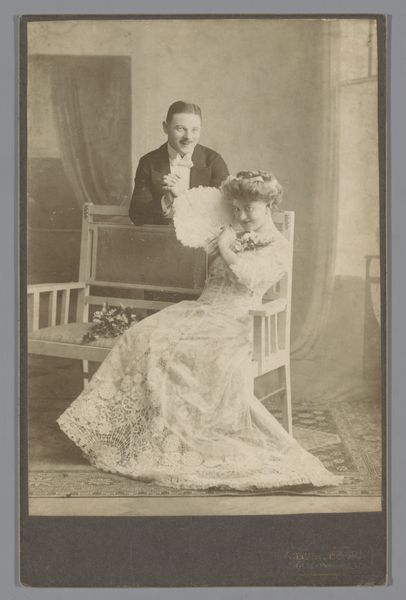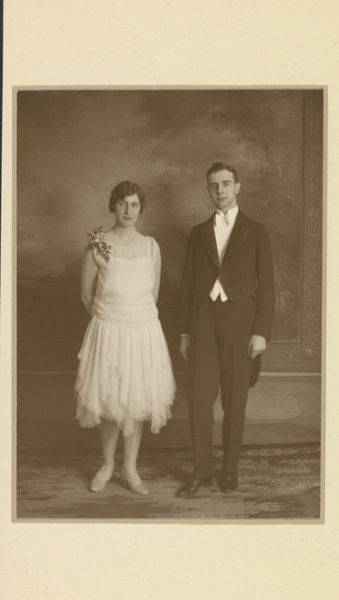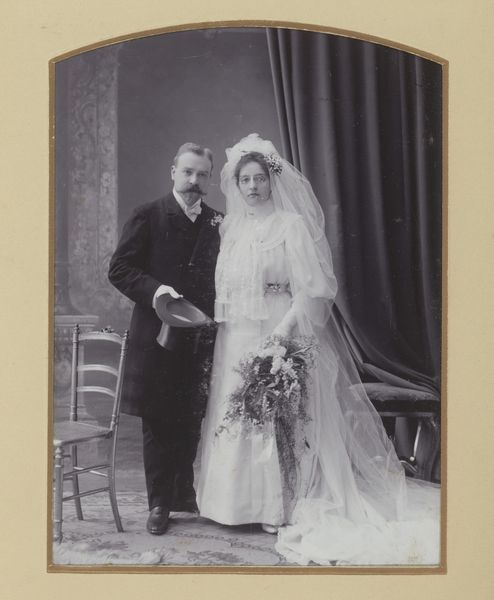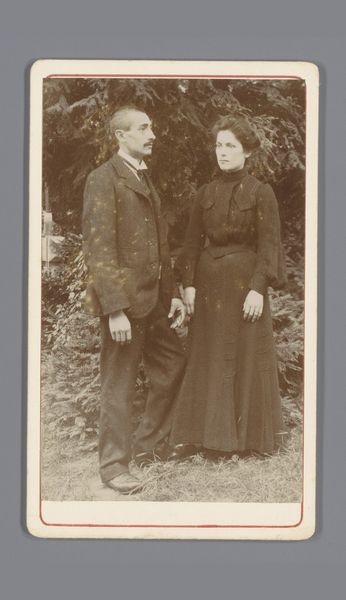
photography
#
portrait
#
still-life-photography
#
photography
#
genre-painting
#
realism
Dimensions: height 142 mm, width 99 mm
Copyright: Rijks Museum: Open Domain
Editor: This is a studio portrait of an unknown couple, probably taken between 1885 and 1905, created through photography. It strikes me as quite formal and staged. What kind of narratives do you see emerging from this photograph? Curator: This image speaks volumes about the construction of identity in the late 19th century. Look at the couple's attire, the man’s suit and the woman’s elaborate dress. How does their clothing communicate societal expectations? How do you see gender and class operating in this portrait? Editor: Well, they seem to be portraying a certain level of affluence and respectability. But their expressions…they don't seem entirely comfortable or happy. Is it possibly hinting at more complex feelings and social dynamics? Curator: Precisely. It reflects the rigid social norms of the time, particularly for women, who were often expected to embody an image of domesticity and subservience. The very act of commissioning such a portrait suggests a desire to project a particular image. Consider who had the agency in the photograph versus who conformed. How might the woman be negotiating her own identity within these constraints? What are the racial implications within such displays of bourgeoisie? Editor: That's interesting. I never really considered how racial identity could intersect with something like a formal portrait in this era. I guess I was so focused on the clothing and the stiff poses. Curator: Often, absence speaks as loud as presence, and this photo could benefit from further analysis regarding race and representation. By exploring the historical and social context, we can uncover the complexities of gender, race, and class dynamics at play in this seemingly simple image. Editor: I understand! This makes me think about how photography was—and still is—used to perpetuate certain ideals while suppressing others. Curator: Indeed. It urges us to question the stories these images tell, and whose stories remain untold. It shows the power of portraiture, the agency it wields, and, often, it reveals social control in times that reflect different norms than today.
Comments
No comments
Be the first to comment and join the conversation on the ultimate creative platform.
